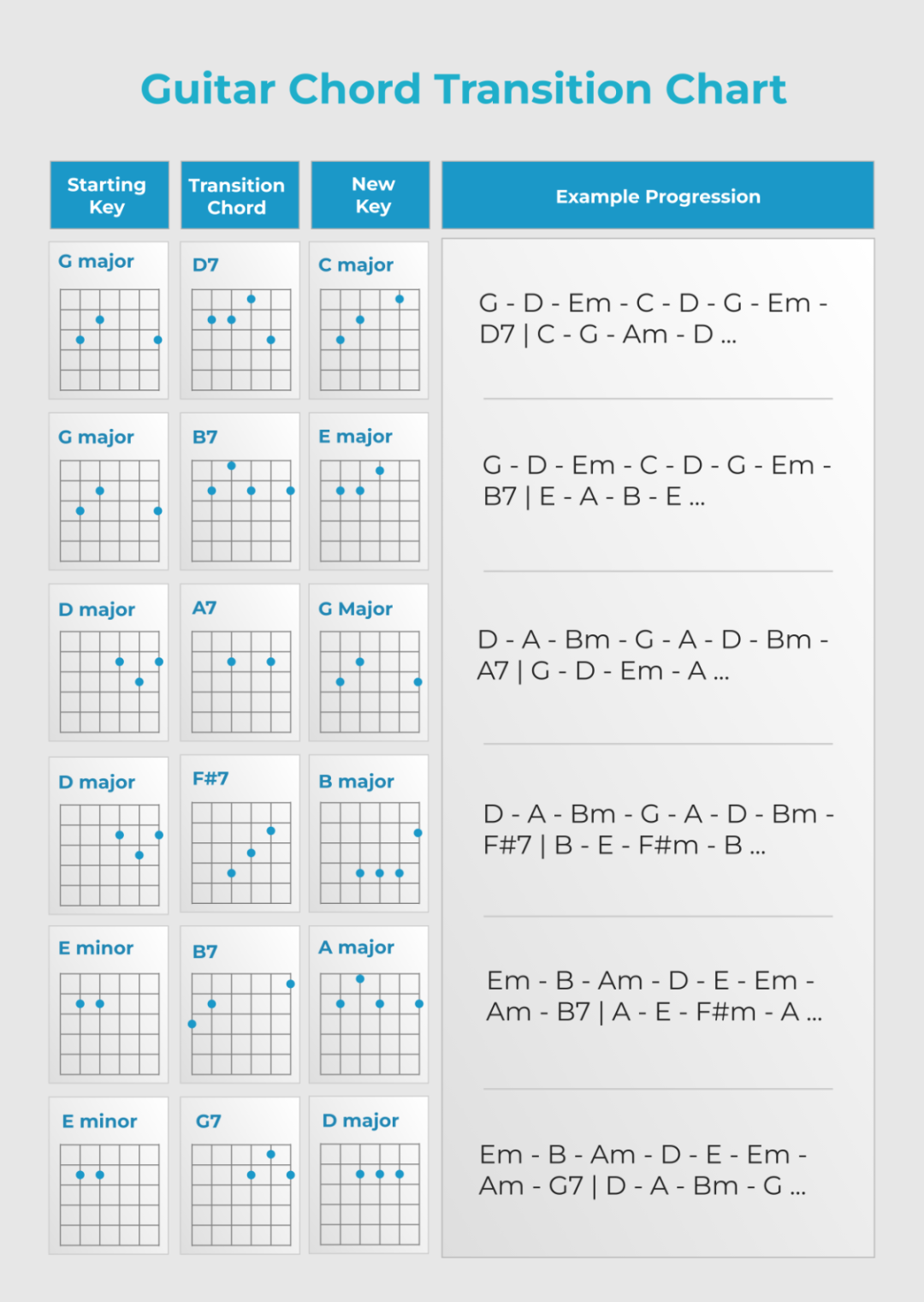—
Unlocking Musical Magic: Free Guitar Chord Progressions to Fuel Your Creativity
So, you’ve got a guitar, maybe you’ve learned a few chords, and now you’re staring at it, wondering, “What next?” You want to make music, right? Real, flowing, engaging music. That’s where chord progressions come in. Think of them as the building blocks of songs. And guess what? You don’t need to be a music theory whiz to get started. There’s a treasure trove of free guitar chord progressions out there, just waiting for you to discover.
The Basics: What’s a Chord Progression Anyway?

Before diving into the freebies, let’s break down what a chord progression actually is. Simply put, it’s a sequence of chords played one after another. Think of it like a sentence in music, where each chord is a word. Some sentences sound happy, some sound sad, and some just make you want to dance. That’s the power of chord progressions.
Why Free Chord Progressions?
You might be thinking, “Why not just make them up?” And you totally can! But free chord progressions are like a shortcut. They give you a solid foundation to build upon. They’re like training wheels for your musical creativity. Plus, they’re a great way to learn common patterns and get a feel for how different chords work together.
Popular Free Chord Progressions You Can Start With:
The Classic I-IV-V Progression
This is the bread and butter of countless songs. You’ll find it in everything from blues and rock to pop and country. In the key of C, it’s C-F-G. In G, it’s G-C-D. It’s simple, versatile, and sounds good in almost any style.
The Emotional I-vi-IV-V Progression
This one adds a touch of melancholy or drama. In C, it’s C-Am-F-G. It’s used in countless ballads and pop anthems. It’s a progression that can evoke real feeling.
The Bluesy I-IV-V7 Progression
Want to inject some blues into your playing? Add a dominant 7th to the V chord. In E, it’s E-A-B7. That little 7th chord adds a gritty, soulful edge.
The Pop-Punk IV-V-I Progression
This one is a classic for high energy pop-punk and rock songs. In D, it’s D-E-A. It’s simple, driving, and perfect for those catchy riffs.
The Simple ii-V-I progression
This is very common in jazz and in pop music. In the key of C it would be Dm-G-C. It sounds very smooth and professional.
Finding Free Chord Progressions Online:
There are tons of websites and YouTube channels dedicated to sharing free chord progressions. You can find them categorized by genre, key, and mood. Look for resources that offer chord charts or diagrams, so you can easily follow along.
Tips for Using Free Chord Progressions:
Experiment with different strumming patterns: A simple change in strumming can completely transform the feel of a progression.
Making Them Your Own:
The real magic happens when you start to personalize these free progressions. Add your own melodies, rhythms, and variations. Don’t be afraid to break the rules and experiment. That’s how you’ll develop your own unique sound.
Conclusion:
Free guitar chord progressions are a fantastic resource for any guitarist, whether you’re a beginner or a seasoned player. They provide a springboard for your creativity, helping you to write songs, jam with friends, and explore the endless possibilities of music. So, grab your guitar, dive into the world of free chord progressions, and start creating your own musical magic. Remember that there are no wrong ways to play or create music. The best progression is the one that inspires you.

